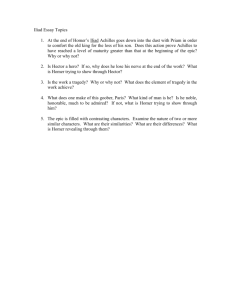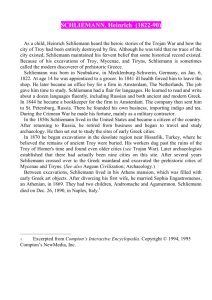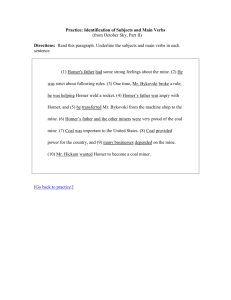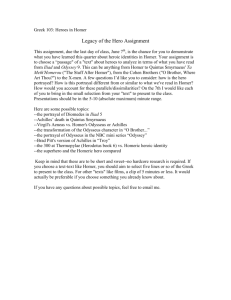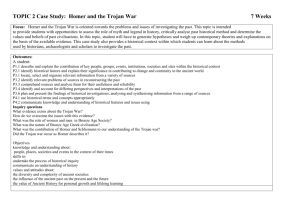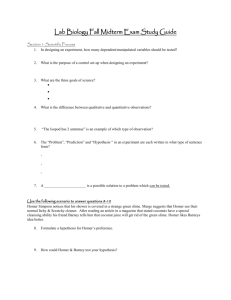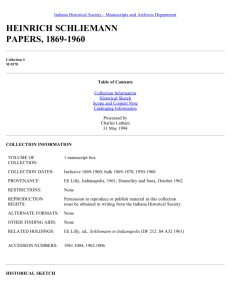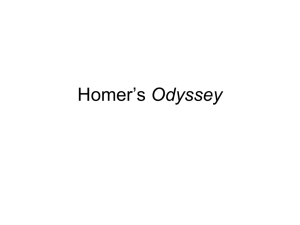The Rise and Fall of Mycenaean Civilization
advertisement
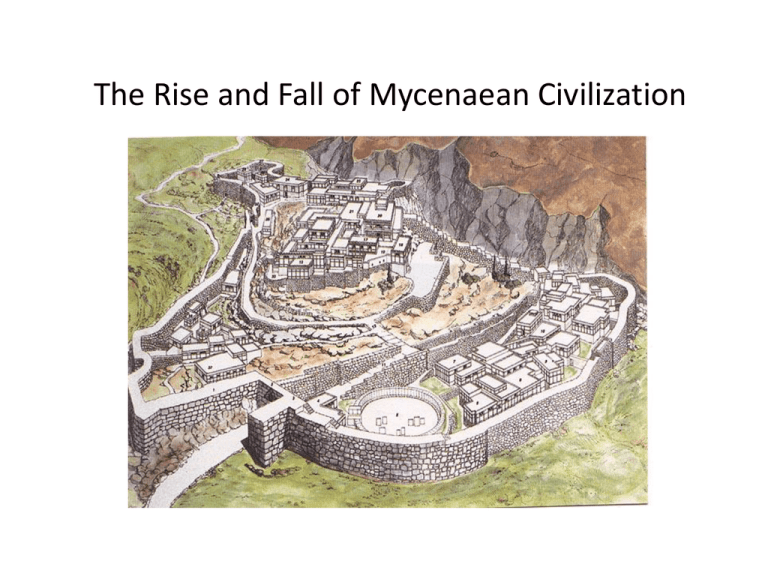
The Rise and Fall of Mycenaean Civilization ARCHEOLOGY PROVIDES EVIDENCE Heinrich Schliemann – inspired by Homer’s The Illiad & The Odyssey Schliemann’s methods, ethics controversial 2 facts: 1) Troy existed 2) Mycenaean civ. Existed about 1000 years prior than anyone thought up until 18th c. and H.S. discoveries • Schliemann & Troy What can we deduce from Schliemann’s findings? • Palace fortified so perhaps more aggressive than Minoans • Images depict more warlike activities • Wealth most likely due to trade • Use of gold and artisan skill • Hierarchical rule • Linear B – written language deciphered 1952 • Reconstruction of palace Corbeled gallery in the wall of the citadel, Tiryns Cyclopean blocks 20 feet thick Homer referred to fortress as “Tiryns of the Great Walls” Lion’s Gate 1300-1250 BCE Guardian figures, reminder of cities warlike past Triangle shape relieves pressure of blocks Entrance to the citadel Funerary mask, inlaid dagger, Vapheio Cups All found 1876 H.S. excavation, NOT Agamemnon’s mask, lion hunt depiction on dagger and bull hunt on cups. Homer describes similar decoration on Achilles’ shield as seen on dagger Decline of Heroic Age 1100-800 BCE Internal discord, human desire & greed • • • • • • No foreign artifacts to prove other hypothesis Migration of people’s biggest impact Spread of Greek culture Poverty & economic hardship common Epic poems of Homer – ideal not authentic past Hesiod – depicts average man not gods “Works & Days” • Homeric values – courage, honor & excellence Pleiades & Flaxmen inspired by Hesiod’s “Works & Days” Achilles killing Hector as described in Homer
